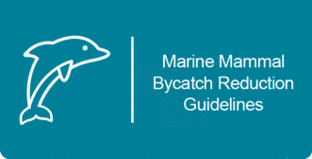Unsustainable fishing practices put at risk the long-term viability of fisheries and livelihoods of fishers and fishing communities, which depend upon them. Over the last few years, FAO has developed several policy instruments which, alongside an ecosystem-based approach to fisheries management, aim to address unsustainable and harmful fishing practices. FAO’s work on the reduction of impacts of fishing operations facilitates improved sustainable fishing practices and reduced impacts of fishing operations on ecosystems within the context of the Code of Conduct for Responsible Fisheries. FAO’s work supports States, and especially developing countries including Small Island Developing States (SIDS), by providing assistance to implement measures, and strengthen institutional capacity to address environmental and socio-economic impacts of fishing operations, based on guidance provided by FAO instruments such as the International Guidelines on the Management of Bycatch and the Reduction of Discards (2011), the Voluntary Guidelines for the Marking of Fishing Gear (2018), and the Technical Guidelines to Prevent and Reduce Bycatch of Marine Mammals in Capture Fisheries (2021).
In depth
Latest
Did you know?
- In 2018, total capture fisheries production had increased to 96.4 million tonnes.
- The top seven capture producers (China, Indonesia, Peru, India, the Russian Federation, the United States of America and Viet Nam) account for 50 percent of total global capture production.
- In 2018, the global total of fishing vessels of all sizes was 4.56 million. Asia has the largest fleet with 68 percent of the global total.
- It is currently estimated that 8 million metric tons of plastic is lost or discarded in our ocean every year. FAO is working closely with independent scientific experts to accurately estimate the contribution from the fisheries sector.













